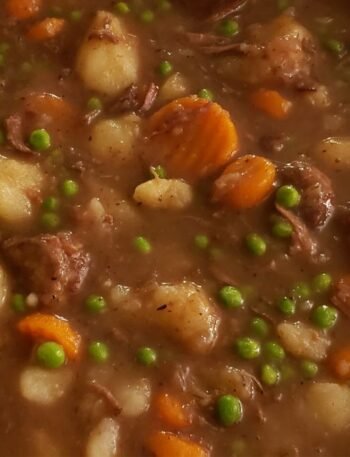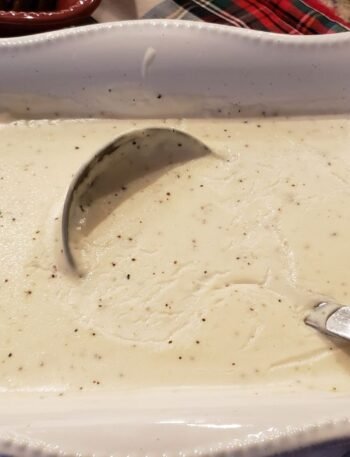Potatoes are a culinary powerhouse that have become a cornerstone of American kitchens. Whether you’re new to cooking or a seasoned chef, potatoes are versatile, affordable, and can be transformed into an endless variety of dishes. From mashed potatoes at Thanksgiving to crispy fries on the side of a burger, potatoes have a place in nearly every meal. Let’s explore how this humble vegetable has shaped the way we cook today and why it remains an essential ingredient in kitchens across the United States.
A Brief History of Potatoes in American Cuisine
Before we dive into modern uses, it’s important to look at how potatoes became a staple in American kitchens. Originally cultivated in South America, the potato was introduced to Europe in the 16th century, eventually making its way to North America. Today, the U.S. is one of the top producers of potatoes globally, with Idaho leading the charge.
Historically, potatoes were popular because they were cheap, easy to grow, and packed with nutrients. “Potatoes are rich in vitamin C, potassium, and fiber, making them a nutritious option for meals,” says the USDA.** In a time when preserving food was difficult, potatoes provided a long-lasting, hearty option that could be stored for months without spoiling.
Potatoes in Modern American Cooking
Fast-forward to today, and potatoes have evolved into a must-have ingredient in both home kitchens and professional restaurants. Whether you’re boiling, roasting, frying, or baking them, the possibilities are endless. Here are some common ways Americans enjoy potatoes in modern-day cooking:
- Fries and Chips: Perhaps the most iconic way Americans consume potatoes is in the form of fries and chips. From fast food joints to gourmet restaurants, fries are everywhere. According to the National Potato Council, “Americans eat about 30 pounds of fries per person annually.” That’s a lot of crispy, golden goodness!
- Mashed Potatoes: The ultimate comfort food. Soft, creamy, and often topped with butter or gravy, mashed potatoes are a holiday favorite. Whether made from scratch or instant, they pair perfectly with a variety of dishes like roasted chicken or meatloaf.
- Baked Potatoes: A baked potato is one of the simplest yet most versatile ways to prepare this vegetable. With just a bit of seasoning and some creative toppings—sour cream, cheese, chives, and bacon—this humble dish can quickly become a meal in itself.
- Hash Browns and Home Fries: Breakfast lovers rejoice! Potatoes take center stage in many American breakfast staples like hash browns and home fries. These crispy, shredded or diced potatoes pair perfectly with eggs, bacon, and toast for a filling start to the day.
- Potato Salads: A summer barbecue wouldn’t be complete without a bowl of potato salad. Whether you prefer a mayonnaise-based dressing or a tangy vinaigrette, potato salads are a picnic essential.
The Science Behind Perfect Potatoes
Cooking potatoes might seem simple, but there’s a bit of science behind it. Potatoes come in two main categories: starchy and waxy. Starchy potatoes like russets are great for baking and frying because they become light and fluffy when cooked. Waxy potatoes like red or new potatoes hold their shape better, making them ideal for salads and casseroles.
“Understanding the type of potato you’re using can really affect your dish,” explains Chef John Smith, an expert in American comfort food. “Using a starchy potato for mashed potatoes will give you that fluffy texture everyone loves, while waxy potatoes are best when you want them to retain their shape.”
Healthy Potato Options
Despite their deliciousness, potatoes sometimes get a bad reputation for being high in carbohydrates. However, potatoes are also packed with vitamins and minerals, and when prepared in a healthy way, they can be part of a balanced diet. Roasting or boiling potatoes with minimal oil, for example, keeps the calorie count low while still offering that signature potato flavor.
For those looking to make healthier choices, sweet potatoes are a great alternative. Sweet potatoes are rich in beta-carotene and offer a natural sweetness that works well in both savory and sweet dishes. “A medium-sized sweet potato contains more than 100% of your daily recommended intake of vitamin A,” according to the USDA. Roasted sweet potato fries are a popular option for those looking to cut back on refined carbs.
Potatoes and Meal Planning
If you’re new to cooking, potatoes can be your best friend when it comes to meal planning. They’re budget-friendly, last a long time in your pantry, and can be used in various recipes throughout the week. Batch cooking roasted potatoes, for instance, can set you up for multiple meals. One night, they can be served as a side with grilled chicken, and the next, they can be turned into a potato salad for lunch.
You can even incorporate leftover mashed potatoes into creative new dishes like potato pancakes or shepherd’s pie. By keeping a bag of potatoes on hand, you’re never far from a quick and filling meal.
Fun Potato Facts
To spice things up, here are some fun facts about potatoes:
- The average American consumes 124 pounds of potatoes each year.
- The largest potato ever grown weighed 18 pounds!
- Potatoes were the first vegetable to be grown in space. In 1995, NASA and the University of Wisconsin created the technology to make it happen.
Ready to Make Potatoes Part of Your Routine?
With so many ways to cook and enjoy them, potatoes are one of the most versatile and satisfying ingredients you can have in your kitchen. Whether you’re a new cook looking for easy weeknight meals or an experienced chef experimenting with flavors, potatoes can be your go-to ingredient for almost any dish.
Do you want to know more? Sign up for our weekly newsletter to get more tips, tricks, and recipes sent straight to your inbox! Start mastering potatoes and other kitchen staples today.
By exploring the many ways potatoes can be incorporated into your meals, you can save time, money, and effort in the kitchen.
Sources:
USDA. “Potato Nutrition Facts.” Accessed September 2024.
National Potato Council. “Potato Consumption Statistics.”
Discover more from In The Kitchen With Vic
Subscribe to get the latest posts sent to your email.






